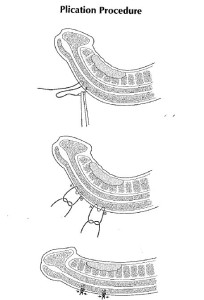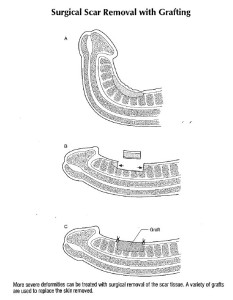
Peyronies Disease is the most common cause of new penile curvature.
It is characterized by a plaque or hard lump, that forms on the penis. The plaque develops in the shaft of the penis in the layer surrounding the erectile tissues. It begins as an area of (painful) localized inflammation and in mild cases, resolves without any long-term changes over 12-18 months.
In more severe cases, the inflammation settles but leaves behind a hardened plaque, reducing flexibility and causing pain, forcing the penis to bend or curve during erection. The plaque itself is benign, or non-cancerous. A plaque on the top of the shaft (most common) causes the penis to bend upward; a plaque on the underside causes it to bend downward. In some cases, the plaque develops on both top and bottom, leading to indentation and shortening of the penis. At times, pain, bending, and emotional distress prevent sexual intercourse.
About 30 percent of people with Peyronie’s disease develop fibrosis (hardened cells) in other elastic tissues of the body, such as on the hand or foot. Common examples include Dupuytren’s contracture of the hand tendons or Plantar Fasciitis of the ligaments in the sole of the foot.
The goal of therapy is to keep the Peyronies patient sexually active. Providing education about the disease and its course often is all that is required. No strong evidence shows that any treatment other than Injection Therapy or surgery are effective.
Experts usually recommend treatment in long-term cases in which the disease has stabilised and the deformity prevents intercourse.
Many researchers believe the plaque of Peyronies disease develops following trauma (usually bending during sex) that causes damage to the blood filled chambers of the penis (the corpora cavernosa) that run the length of the penis. If the penis is injured by excessive bending, the elastic fibres of the wall of these chambers may stretch and rupture, undergo inflammation as they try to heal/repair themselves and as a result of ageing, the effects of smoking or diabetes and other unknown factors, eventually form a scar with reduced elasticity at this point. The penis will then have a tendency to bend around the fixed scar and curve or have an acute angulation at this point. Often patients with Peyronies disease do not have any history of trauma and the reason that the disease starts is unclear.
Injection Therapy is now available that helps some men with Peyronies Disease plaquest affecting their erectile function. XiaflexTM is an enzyme from a bacteria that breaks down collagen (collagenase clostridium hystoliticum) and is injected into the mature penile plaque to soften it and allow remoulding of the penile shaft and corpora. Early results are very encouraging and it is being used increasingly in the USA where trials have shown benefit. Xiaflex Patient Information
Surgery is also a very effective way of treating Peyronies Disease and different methods are used to achieve surgical correction of the penile curvature depending on a number of factors. Methods include Plication (Nesbits or the Lue Multi-Point) Procedures, Scar Excision and Grafting, and in cases where erectile function is compromised in association with the Peyronies Disease, Penile Implant Surgery can be considered.
Click here for more information about Peyronies disease

